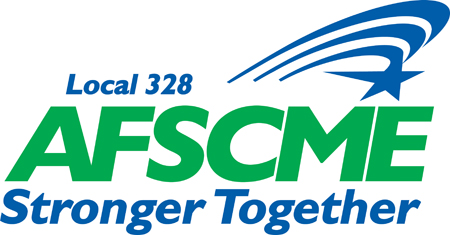Solidarity with BERG — Point of Action #3: Audit OHSU Policies
To the BERG: Our union sees, recognizes and values the incredible leadership and perseverance of our Black colleagues at OHSU. We stand in solidarity with the BERG. AFSCME Local 328 has been reflecting as a union, and we recognize our ability to do much better.
As stated in our December 2020 letter to the OHSU Black Employee Resource Group, AFSCME Local 328 has committed to stand and bear witness to the BERG’s letter sent to OHSU leadership and the board of directors on August 31, 2020, which called out concerns around OHSU’s racist practices, particularly those impacting Black employees. This month we address the first of the BERG’s 14 Points of Action, which is to:
Audit OHSU policies and culture to ensure the environment Blacks work in is more equitable and inclusive to a diversity of backgrounds and perspectives. Tolerance is not diversity or inclusion.
In its response to the BERG’s letter, OHSU stated it would undertake the following to address this Point of Action from the BERG:
Contract with Workplace Change to review HR and AAEO policies/procedures to help OHSU update them to be more equitable and inclusive.
Launch “Story Share” — a StoryCorps-style podcast focusing on BIPOC employees — in November 2020
Re-engage the OHSU Diversity Action Council to focus on policies and expand the DAC to be more inclusive
Review the Code of Conduct to align with OHSU anti-racism efforts
OHSU responded to the BERG more than four months ago. How are things progressing?
No results from the Workplace Change review of OHSU’s HR and AAEO policies/procedures have been shared with the OHSU community to date. Is this work underway? Has the contract even been executed? The apparent lack of progress on this review is even more poignant and frustrating now, in light of the alleged repeated failings of these reporting structures, which led to the recent sexual-harassment lawsuit against OHSU.
The only result for “Story Share” on OHSU Now is this post about the launch. Although OHSU’s response to the BERG described this project as being “designed to widely share the culture and experience of our BIPOC employees to help elevate their voices and perspectives,” the launch story states that the mission of the project is to “encourage and nourish the human spirit; to demonstrate resilience, encouragement and success from marginalized members’ experiences from our community.” The vague concept of nourishing the human spirit is very far removed from the measurable act of elevating the voices of BIPOC employees. There have been two interviews with BIPOC medical providers since OHSU’s response to the BERG. The culture and experience of OHSU’s BIPOC employees (including non-clinicians) is not being widely shared.
The Diversity Action Council is composed primarily of faculty, directors and supervisors who were appointed by the OHSU president. What criteria is used to make these appointments? The DAC roster demonstrates the lack of diversity of experience in OHSU working conditions often seen in groups like this. Where are the classified employees? How many DAC members are Black? Does the BERG have any representation on the DAC? What movement has been made ensure that the DAC is more inclusive of the broader OHSU community? OHSU’s response to the BERG also referenced a renewed focus on policies, as well as updates to the DAC bylaws to reflect OHSU’s anti-racism objectives. What policies have been focused on? Have the bylaws been updated? Where can they be found? Where can an OHSU employee find updates on the work of OHSU’s anti-racism task force? The DAC’s webpage links to a Diversity Strategic Plan, but it’s more than 12 years old. Also available is a Diversity Action Plan from 2013, when there were 6,400 fewer employees and students at OHSU. Is the DAC working on updating these plans?
In the months prior to OHSU’s response to the BERG, OHSU employees and students were encouraged to share feedback via IdeaScale to improve the Code of Conduct. This process resulted in 24 posted ideas with 1,018 views and only 381 votes (only 1.64% of OHSU’s employees and students). The IdeaScale platform is inherently inequitable and unavailable to all OHSU employees — this is particularly problematic considering that many employees affected by racism, discrimination and racist policies have no access to an OHSU computer during their work shift or time to dedicate during their shift to submit, review or vote on ideas on the platform. Five months have passed since the deadline to submit ideas to improve the Code of Conduct, but the document is apparently still under review. Which of the employee suggestions (from the employees who were able to participate) have been incorporated into revised document? When will the updated Code of Conduct be made available to employees?
AFSCME Local 328 continues to hold the entire OHSU community accountable (including but not limited to members of our bargaining unit, OHSU leadership, students and researchers) to do their part — individually and collectively — in remaking OHSU into an anti-racist institution. In order for this to happen, we must all be accountable and demonstrate transparency. As such, we stand with the BERG and their call for OHSU to audit its policies and culture to ensure the environment that Black employees work in is more equitable and inclusive to a diversity of backgrounds and perspectives.
